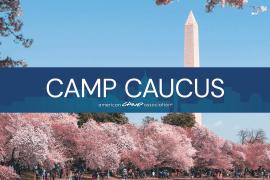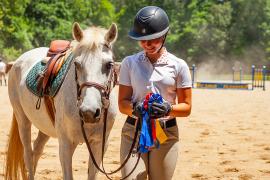Greetings Camp Professionals!
It’s hard to believe another summer is nearly upon us! And whether you’re forging ahead with virtual/distanced programming or welcoming campers back on-site, whether you’ve integrated new programs and protocols or are continuing with more familiar practices, one thing is almost certain: you’re going to need to train your staff. Well, lucky for you, Ann Gillard and Robert P. Warner have compiled a new resource to assist you through this process. Their Evidence-Informed Guidance for Summer Camp Staff Training provides camp professionals with promising practices for summer camp training, and can help camp administrators make decisions about training their staff. This three-part series will outline that resource, highlighting (1) what we know about summer camp staff training, (2) recommended competencies and how training effectiveness is influenced by characteristics of camp staff, and finally (3) how to structure staff training and how training can transfer to camp work. Now let’s dive in, shall we?
Why talk about summer camp staff training?
Camp staff are essential elements of the camp experience, and research shows that experiences of working at camp can have lifelong impacts on career and other life choices. And part of every camp staff member’s knowledge and skills is dependent on their training, which typically aims to improve said knowledge and skills of staff members.
What do we know about summer camp staff training?
While most camps deliver at least some professional development to seasonal staff, most of the training is conducted by internal staff and not much is delivered online. Further, camp employment is an increasingly researched area in workforce skills and development but more information is needed.
It’s required. ACA accreditation standards (2021) require staff training of two to three days for short-term day camps and five to six days for resident camps. Training must include the following topics:
- Camp purpose, focus, mission, intended outcomes, and how these are implemented in camp structure and program activities
- Developmental needs of campers to be served and the resulting differences necessary for program and structure
- Objectives, safety considerations, skills progression, operating procedures, and competencies required for program activities
- Age-appropriate behavior management and camper supervision techniques to help create a physically and emotionally safe environment
- Clear expectations for staff performance and conduct, including sexual harassment policies
- Recognition, prevention, and reporting of child abuse
- Emergency procedures and staff members’ roles in implementation
Additional training is required for different roles including supervisory roles.
And pervasive. Indeed, according to ACA’s 2016 Camp Compensation and Benefits Report, trailingly likely happens for more than 1.5 million people employed in camps each summer.
Want to learn more about camp staff training? Next time we’ll highlight recommended competencies and how training effectiveness is influenced by characteristics of camp staff, and the following week we’ll look at how to structure staff training and how training can transfer to camp work. I also invite you to check out the recorded webinar on this very material with Ann Gillard, PhD, and check out the full training guide.
Thanks for reading. Until next time!
Photo courtesy of GTA Photography Camps in Chicago
Thanks to our research partner, Redwoods.
Additional thanks goes to our research supporter, Chaco.
The views and opinions expressed by contributors are their own and do not necessarily reflect the views of the American Camp Association or ACA employees.




